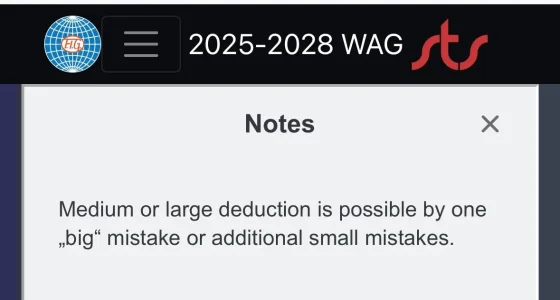- Mar 6, 2021
- 502
- 777
- Thread starter
- #21
Section 13 - Floor Exercise - D Score
A. 13.3 Composition Requirements
1. Dance Passage
B. Technical Requirements for Specific Elements
1. Double Salto Stretched with Twist
Section 13 - Floor Exercise - E Score
A. Specific Elements
1. Turns in Tuck Stand / Wolf Turn
Vault and Artistry to come...
A. 13.3 Composition Requirements
1. Dance Passage
- CR is not fulfilled by back and forth travel pattern, i.e. if the gymnast performs the first element of a dance passage, then reverses direction and performs the second element traveling along the original pattern
- While turns are typically not allowed in a dance passage, using a 1/2 turn or 3/4 turn (piroutte with no DV) for changing directions is permitted
B. Technical Requirements for Specific Elements
1. Double Salto Stretched with Twist
- Criteria for double layout (with no twist) now applies to receive credit for stretched position.
- Majority of salto must be maintained in stretched position
- If piking on entry into second salto, then recognize as pike salto
- When grasping legs to initiate second salto, then consider as pike
Section 13 - Floor Exercise - E Score
A. Specific Elements
1. Turns in Tuck Stand / Wolf Turn
- Common execution errors resulting in 0.3 deduction is bent knee at beginning of turn + not ideal body posture throughout turn (two small errors -> medium deduction)
- If rebound in same place upon landing, no deduction for hop
Vault and Artistry to come...
